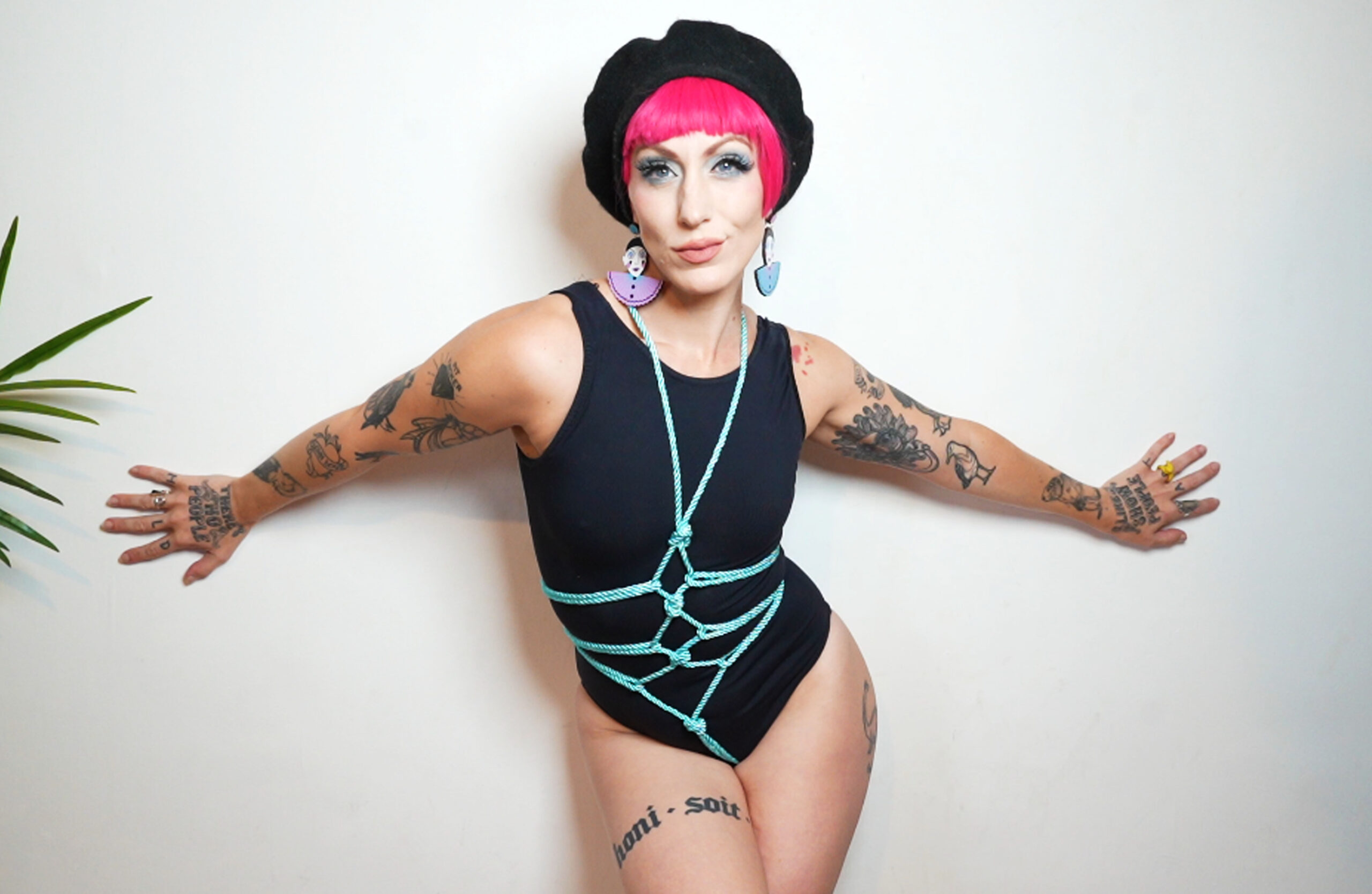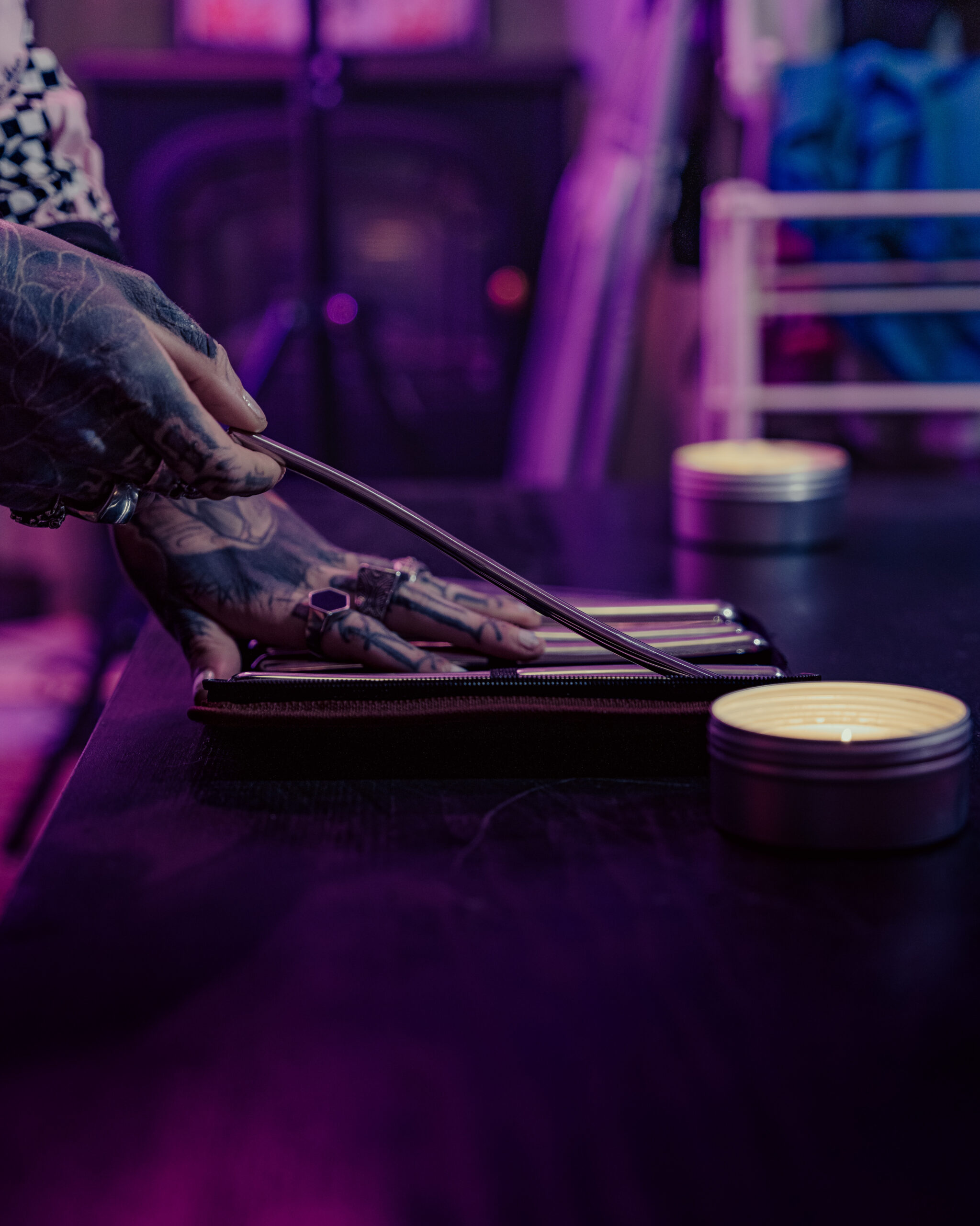Pansexual Identity and its Impact on Gender Norms
Pansexuality, the romantic and sexual attraction to people regardless of their gender identity or expression, challenges deeply ingrained societal norms around gender and attraction. By rejecting the limitations of binary classifications, pansexuality pushes for a more inclusive understanding of human connection, questioning the idea that attraction is confined by rigid gender roles.
Challenging the Binary: Breaking Free from Rigid Categories
Pansexuality dismantles the traditional notion of attraction being limited to specific genders. It asserts that romantic and sexual desire can extend beyond the confines of binary categories, encompassing individuals of all gender identities and expressions. This inherently challenges societal norms that often dictate who we are supposed to be attracted to based on pre-defined gender roles.
By embracing attraction across the spectrum of gender identity, pansexuality fosters a more fluid and accepting view of relationships. It encourages individuals to explore their own attractions without being bound by rigid social expectations. This shift in perspective can have a profound impact on how we understand and experience intimacy, paving the way for more diverse and meaningful connections.
The celebration of pansexuality also contributes to dismantling harmful stereotypes associated with gender. By recognizing that attraction is not dictated by gender, it challenges the idea that certain genders are inherently more desirable or suitable for romantic or sexual relationships. This can help create a more equitable and inclusive environment where individuals feel empowered to express their true selves without facing prejudice or discrimination.
Redefining Attraction Beyond Traditional Constructs
Pansexuality, the romantic and sexual attraction to people regardless of their gender identity or expression, challenges deeply ingrained societal norms around gender and attraction. By rejecting the limitations of binary classifications, pansexuality pushes for a more inclusive understanding of human connection, questioning the idea that attraction is confined by rigid gender roles.
Pansexuality dismantles the traditional notion of attraction being limited to specific genders. It asserts that romantic and sexual desire can extend beyond the confines of binary categories, encompassing individuals of all gender identities and expressions. This inherently challenges societal norms that often dictate who we are supposed to be attracted to based on pre-defined gender roles.
By embracing attraction across the spectrum of gender identity, pansexuality fosters a more fluid and accepting view of relationships. It encourages individuals to explore their own attractions without being bound by rigid social expectations. This shift in perspective can have a profound impact on how we understand and experience intimacy, paving the way for more diverse and meaningful connections.
The celebration of pansexuality also contributes to dismantling harmful stereotypes associated with gender. By recognizing that attraction is not dictated by gender, it challenges the idea that certain genders are inherently more desirable or suitable for romantic or sexual relationships. This can help create a more equitable and inclusive environment where individuals feel empowered to express their true selves without facing prejudice or discrimination.
Societal Reactions and Challenges Faced by Pansexual Individuals
Pansexuality challenges traditional notions of attraction by embracing romance and sexuality with individuals regardless of gender identity or expression. This rejection of binary classifications pushes for a more inclusive understanding of human connection, questioning the societal limitations placed on who we are attracted to.

Stigma and Misconceptions surrounding Pansexuality
Despite its growing visibility, pansexuality continues to face significant societal reactions and challenges. One of the primary obstacles is pervasive stigma and misconceptions surrounding pansexuality. Many individuals lack understanding of what pansexuality truly entails, leading to harmful stereotypes and generalizations.
A common misconception is that pansexuality is simply bisexuality with an added “gender” element. This simplification ignores the nuanced differences in how pansexual individuals experience attraction. Furthermore, some people equate pansexuality with promiscuity or a lack of commitment, perpetuating harmful and inaccurate narratives.
These misconceptions often lead to discrimination and prejudice against pansexual individuals. They may face rejection from family and friends, struggle to find acceptance within their communities, and experience harassment or violence based on their sexual orientation. The fear of judgment and rejection can also prevent pansexual individuals from openly expressing their identities.
Addressing these societal challenges requires ongoing education and open dialogue. It’s crucial to challenge stereotypes and promote accurate information about pansexuality. Encouraging empathy and understanding towards the experiences of pansexual individuals is essential for creating a more inclusive and accepting society.
Experiences of Discrimination and Prejudice
Pansexuality, the romantic and sexual attraction to people regardless of their gender identity or expression, challenges deeply ingrained societal norms around gender and attraction. By rejecting the limitations of binary classifications, pansexuality pushes for a more inclusive understanding of human connection, questioning the idea that attraction is confined by rigid gender roles.
Pansexuality dismantles the traditional notion of attraction being limited to specific genders. It asserts that romantic and sexual desire can extend beyond the confines of binary categories, encompassing individuals of all gender identities and expressions. This inherently challenges societal norms that often dictate who we are supposed to be attracted to based on pre-defined gender roles.
By embracing attraction across the spectrum of gender identity, pansexuality fosters a more fluid and accepting view of relationships. It encourages individuals to explore their own attractions without being bound by rigid social expectations. This shift in perspective can have a profound impact on how we understand and experience intimacy, paving the way for more diverse and meaningful connections.
The celebration of pansexuality also contributes to dismantling harmful stereotypes associated with gender. By recognizing that attraction is not dictated by gender, it challenges the idea how to twerk while having sex that certain genders are inherently more desirable or suitable for romantic or sexual relationships. This can help create a more equitable and inclusive environment where individuals feel empowered to express their true selves without facing prejudice or discrimination.
Despite its growing visibility, pansexuality continues to face significant societal reactions and challenges. One of the primary obstacles is pervasive stigma and misconceptions surrounding pansexuality. Many individuals lack understanding of what pansexuality truly entails, leading to harmful stereotypes and generalizations.
A common misconception is that pansexuality is simply bisexuality with an added “gender” element. This simplification ignores the nuanced differences in how pansexual individuals experience attraction. Furthermore, some people equate pansexuality with promiscuity or a lack of commitment, perpetuating harmful and inaccurate narratives.
These misconceptions often lead to discrimination and prejudice against pansexual individuals. They may face rejection from family and friends, struggle to find acceptance within their communities, and experience harassment or violence based on their sexual orientation. The fear of judgment and rejection can also prevent pansexual individuals from openly expressing their identities.
Addressing these societal challenges requires ongoing education and open dialogue. It’s crucial to challenge stereotypes and promote accurate information about pansexuality. Encouraging empathy and understanding towards the experiences of pansexual individuals is essential for creating a more inclusive and accepting society.

The Need for Increased Visibility and Understanding
Pansexuality, the romantic and sexual attraction to people regardless of their gender identity or expression, challenges deeply ingrained societal norms around gender and attraction. By rejecting the limitations of binary classifications, pansexuality pushes for a more inclusive understanding of human connection, questioning the idea that attraction is confined by rigid gender roles.
Pansexuality dismantles the traditional notion of attraction being limited to specific genders. It asserts that romantic and sexual desire can extend beyond the confines of binary categories, encompassing individuals of all gender identities and expressions. This inherently challenges societal norms that often dictate who we are supposed to be attracted to based on pre-defined gender roles.
By embracing attraction across the spectrum of gender identity, pansexuality fosters a more fluid and accepting view of relationships. It encourages individuals to explore their own attractions without being bound by rigid social expectations. This shift in perspective can have a profound impact on how we understand and experience intimacy, paving the way for more diverse and meaningful connections.
The celebration of pansexuality also contributes to dismantling harmful stereotypes associated with gender. By recognizing that attraction is not dictated by gender, it challenges the idea that certain genders are inherently more desirable or suitable for romantic or sexual relationships. This can help create a more equitable and inclusive environment where individuals feel empowered to express their true selves without facing prejudice or discrimination.
Despite its growing visibility, pansexuality continues to face significant societal reactions and challenges. One of the primary obstacles is pervasive stigma and misconceptions surrounding pansexuality. Many individuals lack understanding of what pansexuality truly entails, leading to harmful stereotypes and generalizations. A common misconception is that pansexuality is simply bisexuality with an added “gender” element. This simplification ignores the nuanced differences in how pansexual individuals experience attraction. Furthermore, some people equate pansexuality with promiscuity or a lack of commitment, perpetuating harmful and inaccurate narratives.
These misconceptions often lead to discrimination and prejudice against pansexual individuals. They may face rejection from family and friends, struggle to find acceptance within their communities, and experience harassment or violence based on their sexual orientation. The fear of judgment and rejection can also prevent pansexual individuals from openly expressing their identities.
Addressing these societal challenges requires ongoing education and open dialogue. It’s crucial to challenge stereotypes and promote accurate information about pansexuality. Encouraging empathy and understanding towards the experiences of pansexual individuals is essential for creating a more inclusive and accepting society. Increased visibility of pansexual people in media, pop culture, and everyday life can also help normalize pansexuality and foster greater acceptance.
Representation and Progress towards Acceptance
Pansexuality challenges societal norms surrounding gender and attraction by embracing romantic and sexual desire for individuals regardless of their gender identity or expression. It rejects the limitations of binary classifications, advocating for a more inclusive understanding of human connection where attraction is not confined by rigid gender roles.
Growing Awareness and Acceptance in Media and Popular Culture
Pansexuality challenges traditional notions of attraction by embracing romance and sexuality with individuals regardless of their gender identity or expression. This rejection of binary classifications pushes for a more inclusive understanding of human connection, questioning the societal limitations placed on who we are attracted to.
Despite its growing visibility, pansexuality continues to face significant societal reactions and challenges. One of the primary obstacles is pervasive stigma and misconceptions surrounding pansexuality. Many individuals lack understanding of what pansexuality truly entails, leading to harmful stereotypes and generalizations.
- A common misconception is that pansexuality is simply bisexuality with an added “gender” element. This simplification ignores the nuanced differences in how pansexual individuals experience attraction.
- Furthermore, some people equate pansexuality with promiscuity or a lack of commitment, perpetuating harmful and inaccurate narratives.
These misconceptions often lead to discrimination and prejudice against pansexual individuals. They may face rejection from family and friends, struggle to find acceptance within their communities, and experience harassment or violence based on their sexual orientation. The fear of judgment and rejection can also prevent pansexual individuals from openly expressing their identities.
Addressing these societal challenges requires ongoing education and open dialogue. It’s crucial to challenge stereotypes and promote accurate information about pansexuality. Encouraging empathy and understanding towards the experiences of pansexual individuals is essential for creating a more inclusive and accepting society.
Advocacy Efforts and Organizations Supporting Pansexual Individuals
Pansexuality, the romantic and sexual attraction to people regardless of their gender identity or expression, challenges deeply ingrained societal norms around gender and attraction. By rejecting the limitations of binary classifications, pansexuality pushes for a more inclusive understanding of human connection, questioning the idea that attraction is confined by rigid gender roles.
Pansexuality dismantles the traditional notion of attraction being limited to specific genders. It asserts that romantic and sexual desire can extend beyond the confines of binary categories, encompassing individuals of all gender identities and expressions. This inherently challenges societal norms that often dictate who we are supposed to be attracted to based on pre-defined gender roles.
By embracing attraction across the spectrum of gender identity, pansexuality fosters a more fluid and accepting view of relationships. It encourages individuals to explore their own attractions without being bound by rigid social expectations. This shift in perspective can have a profound impact on how we understand and experience intimacy, paving the way for more diverse and meaningful connections.
The celebration of pansexuality also contributes to dismantling harmful stereotypes associated with gender. By recognizing that attraction is not dictated by gender, it challenges the idea that certain genders are inherently more desirable or suitable for romantic or sexual relationships. This can help create a more equitable and inclusive environment where individuals feel empowered to express their true selves without facing prejudice or discrimination.
Despite its growing visibility, pansexuality continues to face significant societal reactions and challenges. One of the primary obstacles is pervasive stigma and misconceptions surrounding pansexuality. Many individuals lack understanding of what pansexuality truly entails, leading to harmful stereotypes and generalizations.
- A common misconception is that pansexuality is simply bisexuality with an added “gender” element. This simplification ignores the nuanced differences in how pansexual individuals experience attraction.
- Furthermore, some people equate pansexuality with promiscuity or a lack of commitment, perpetuating harmful and inaccurate narratives.
These misconceptions often lead to discrimination and prejudice against pansexual individuals. They may face rejection from family and friends, struggle to find acceptance within their communities, and experience harassment or violence based on their sexual orientation. The fear of judgment and rejection can also prevent pansexual individuals from openly expressing their identities.
Addressing these societal challenges requires ongoing education and open dialogue. It’s crucial to challenge stereotypes and promote accurate information about pansexuality. Encouraging empathy and understanding towards the experiences of pansexual individuals is essential for creating a more inclusive and accepting society.
- Advocacy efforts by organizations such as the Pan Resource Center, GLAAD, and The Trevor Project play a vital role in advancing equality and support for pansexual people. These organizations work to raise awareness, provide resources, and advocate for policies that protect the rights of pansexual individuals.
- Additionally, online communities and support groups offer safe spaces for pansexual individuals to connect with others, share their experiences, and find support.
Increased visibility of pansexual people in media, pop culture, and everyday life can also help normalize pansexuality and foster greater acceptance.
Pansexuality challenges societal norms surrounding gender and attraction by embracing romantic and sexual desire for individuals regardless of their gender identity or expression. It rejects the limitations of binary classifications, advocating for a more inclusive understanding of human connection where attraction is not confined by rigid gender roles.
The journey towards full acceptance of pansexuality is ongoing. However, through continued education, open dialogue, and the unwavering support of advocates and allies, we can create a world where individuals feel empowered to embrace their true identities without fear of judgment or discrimination.
Legal Recognition and Protection of Rights
Pansexuality challenges societal norms around gender and attraction by embracing romantic and sexual desire for individuals regardless of their gender identity or expression. It rejects the limitations of binary classifications, advocating for a more inclusive understanding of human connection where attraction is not confined by rigid gender roles.
This shift in perspective can have a profound impact on how we understand and experience intimacy, paving the way for more diverse and meaningful connections.
Despite its growing visibility, pansexuality continues to face significant societal reactions and challenges. One of the primary obstacles is pervasive stigma and misconceptions surrounding pansexuality. Many individuals lack understanding of what pansexuality truly entails, leading to harmful stereotypes and generalizations.
A common misconception is that pansexuality is simply bisexuality with an added “gender” element. This simplification ignores the nuanced differences in how pansexual individuals experience attraction. Furthermore, some people equate pansexuality with promiscuity or a lack of commitment, perpetuating harmful and inaccurate narratives.
These misconceptions often lead to discrimination and prejudice against pansexual individuals. They may face rejection from family and friends, struggle to find acceptance within their communities, and experience harassment or violence based on their sexual orientation. The fear of judgment and rejection can also prevent pansexual individuals from openly expressing their identities.
Addressing these societal challenges requires ongoing education and open dialogue. It’s crucial to challenge stereotypes and promote accurate information about pansexuality. Encouraging empathy and understanding towards the experiences of pansexual individuals is essential for creating a more inclusive and accepting society.
- Why Cant You Vape After Lip Filler - November 21, 2025
- What Is The Best Filler For Neck Lines? - November 19, 2025
- What Are The Benefits Of Bum Filler Injections? - November 17, 2025
